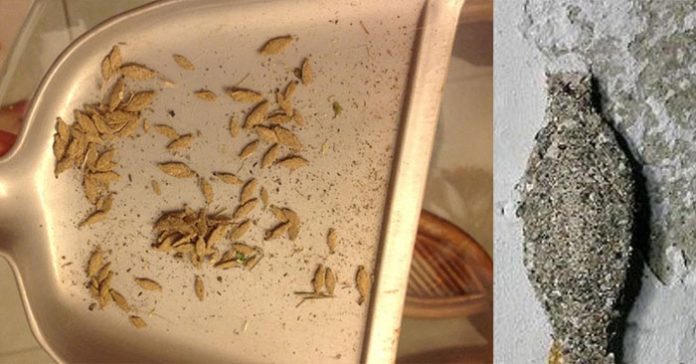Plaster pocket worm What is that? This article will tell you everything about the one that sticks to the wall in a plaster-like bag.

Household casebearer belongs to the moth family. Many species in this family are shell-eating moths, and a few are household pests of hair, wool, silk, felt, and similar materials. Most people know this species as the plaster bagworm. However, bagworms are moths in the family Psychidae. Perhaps for that reason, the commonly accepted name for Phereoeca uterella is now listed as the shell-eating moth, rather than the plaster bagworm (Bosik JJ, et al. 1997).
Almost every house on Earth has the presence of plaster bagworms. According to research, they especially like humid environments. On the outside, they seem small and rarely move, but they are actually more dangerous than you think, especially for wardrobes. Here's what you need to know about this worm.
Things to know about plaster bag worms
Lychee moth is a caterpillar that lays microscopic eggs. Each time she reproduces, the mother lays about 100 – 400 tiny eggs, each egg is only 0.5mm in size. Eggs will hatch after 4 – 10 days, depending on the temperature and humidity of the environment. After hatching, the lychee moth larvae are shaped like a worm.
Normally, moth worms just “stick” in one place and are brown in color, so they are often confused with a bunch of dust covered with a layer of cotton.

Lychees “like” damp and dark places. Their food is your clothes, or fabrics made from natural fibers. Therefore, the fabric moth often moves to places hidden from light such as in the closet, between layers of clothes, and “full cups” of fabric.
In addition to fabrics, fabric moths are also attracted to food stains, sweat, mucus or sand from the human body on clothes.
Therefore, the lychee moth is the culprit that causes “holes” in clothes. They even lay eggs on fabric, especially fabrics made from natural fibers, feathers, leather, wool or silk. After the eggs hatch, the larvae develop into moths or caterpillars, they will leave and leave behind the empty nest that we often see.

How to prevent and eliminate these insects
To remove “obnoxious” insects from your house, you can refer to some of the ways below:
- Regularly clean and sanitize the house, beds, blankets, pillows,…
- Keep the house airy and dry.
- Place the wardrobe in a clean, airy place, avoiding damp places.
- Choose an insect-proof fragrant wooden cabinet or use scented wax or a moisture-proof fabric bag and place it in the wardrobe.
- After wearing clothes, they need to be washed and dried thoroughly before putting them in the wardrobe.
- If you discover small holes in clothes, you need to check and clean the closet.
With the above preventative measures, your house and wardrobe will always be clean. And then, harmful insects like lychee moths will never appear.


